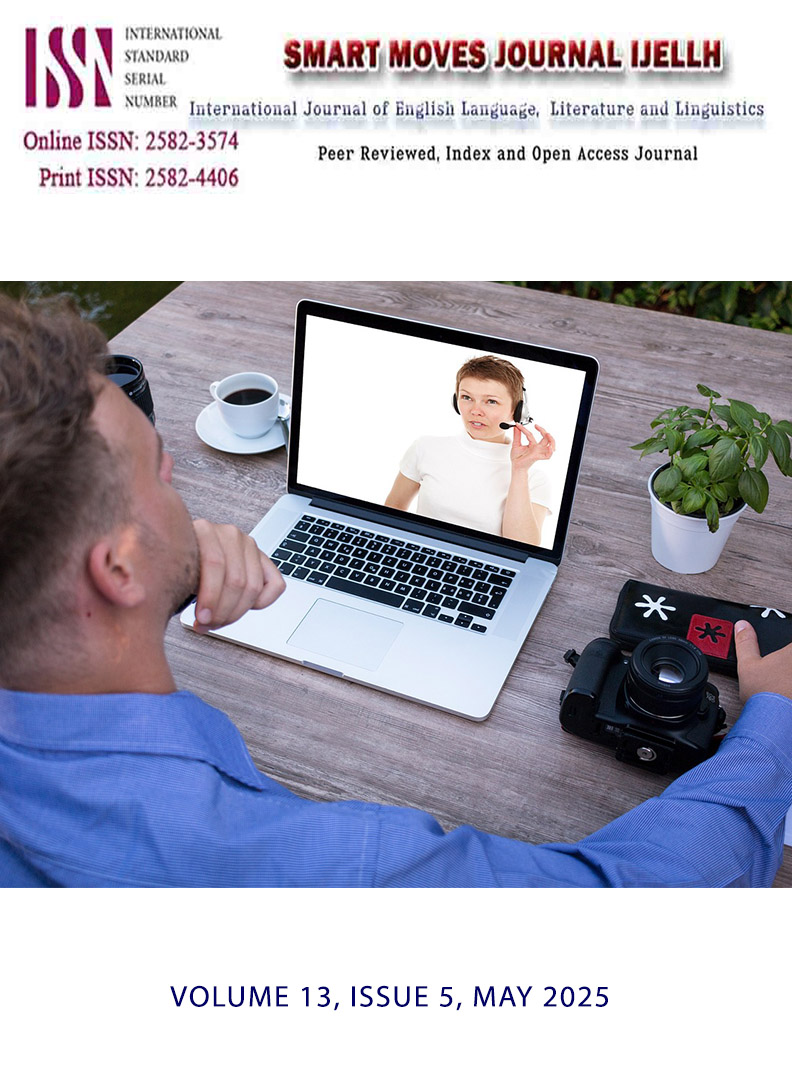The Two Villainous Brothers, their Crimes and Punishments in John Webster’s The Duchess of Malfi
DOI:
https://doi.org/10.24113/smji.v13i5.11551Keywords:
The marriage of the Duchess, Ferdinand and Cardinal’s villainy, their punishments, Ferdinand’s guilt.Abstract
Ferdinand and Cardinal in John Webster’s renowned revenge tragedy The Duchess of Malfi, are two brothers of the central character, the Duchess. They symbolize evils, although the elder one expresses remorse just before the end of the play. Among the three siblings, Ferdinand is the eldest, Cardinal is the middle, and the Duchess is the youngest. Ferdinand and Cardinal are infamous for their villainy in the Jacobean drama. At the start of the play, set in Italy, the volatile eldest brother, the Duke, plans to control the acts and decisions of his only sister, a widow with three children. The deceitful Ferdinand threatens that if she marries secretly, the consequences will be disastrous, and the brothers will not accept it. His younger brother, the Cardinal, joins Ferdinand in conspiracies with him. They appointed Bosola to work as a spy on her. He works as the head of her stables to collect information about the Duchess’s secret marriage. After learning about her clandestine marriage with a low-ranking steward, Ferdinand shows volcanic eruption and becomes determined to take revenge on her. The innocent Duchess, unaware of the brothers’ schemes and revenge plan on her, falls into her brothers’ prey and is murdered by Bosola. This way, the brothers committed crimes and sins as they were the masterminds of the brutal killing of their sister and her two children. The Cardinal remains unaffected and proves him the worst brother. English literature has some notorious villains in different texts, who remain unchanged and show no sign of regret at their deaths. But, in this tragedy, Duke Ferdinand’s villainous activities were deliberate, and his repentance is also genuine. He is revealed as a man who is not a thorough villain. Throughout the play, the reader does not find his commendable qualities in him. In the end, his repentance uplifts him as a human being. His realization and repentance arouse sympathy in the reader as he does not lose all traces of humanity. He recreates his identity from a wicked to a moral person. But we do not see any repentance in scheming, dishonest the Cardinal. This paper attempts to show the crimes and punishments of both the brothers. It also aims to show who is the worst between the two.
Downloads
References
Adhikari, A., Saha, B.(2021). CHALLENGING TRADITIONAL MARRIAGE LAWS IN THE DUCHESS OF MALFI: LOVE OR LONGINGS OR DEFYING PATRIARCHY. EPRA International Journal of Multidisciplinary Research.135.
Calderwood, J.A. (1962). The Duchess of Malfi: Styles of Ceremony. Essays in Criticism, Volume XII( 2), April. Pages 133–147, https://doi.org/10.1093/eic/XII.2.75.
Holdsworth. R.V.(Ed.).(1975).The white devil and The Duchess of Malfi, Casebook Series, London, England: McMillan
Ikhlas, Nati, Rashid(2025). “Transcending Patriarchal Limitations: A Study of John Webster ' s The Duchess Of Malfi”. Available at Research Gate. DOI:10.13140/RG.2.2.12594.63682
Jankowski, T. (1991). “Defining/Confining the Duchess: Negotiating the Female Body in John Webster’s “The Duchess of Malfi.” The Duchess of Malfi Casebook. Ed. Dorothea Kehler and Susan Baker. Metuchen, N.J.: The Scarecrow Press, Inc,.
Jashimuddin, S. M.(2018). “Nature of Obsession: Comparison between Ferdinand and Angelo”. Premeir Critical Perspective.Vol. 3(1).
Mikesell, M. L.(1991). “The Formative Power of Marriage in Stuart Tragedy.” In Another Country. Ed. Dorothea Kehler and Susan Baker. Metuchen, N.J.: The Scarecrow Press, Inc,.
Prendergast. M. A.( 2007). THE DUCHESS’S “NEW WORLD”: MARRIAGE AND ITS CONSEQUENCES IN THE DUCHESS OF MALFI .A Thesis for Master of Arts, University of North Carolina,
Stone, L. (1961). “Marriage among the English Nobility in the Sixteenth and Seventeenth Centuries.” Comparative Studies in Society and History 3.2, 182-206.
Webster, J. (1988). The Duchess of Malfi, Manchester, UK: Manchester University Press.
Downloads
Published
How to Cite
Issue
Section
License
Copyright (c) 2025 Salma Haque

This work is licensed under a Creative Commons Attribution 4.0 International License.
https://creativecommons.org/licenses/by/4.0/



